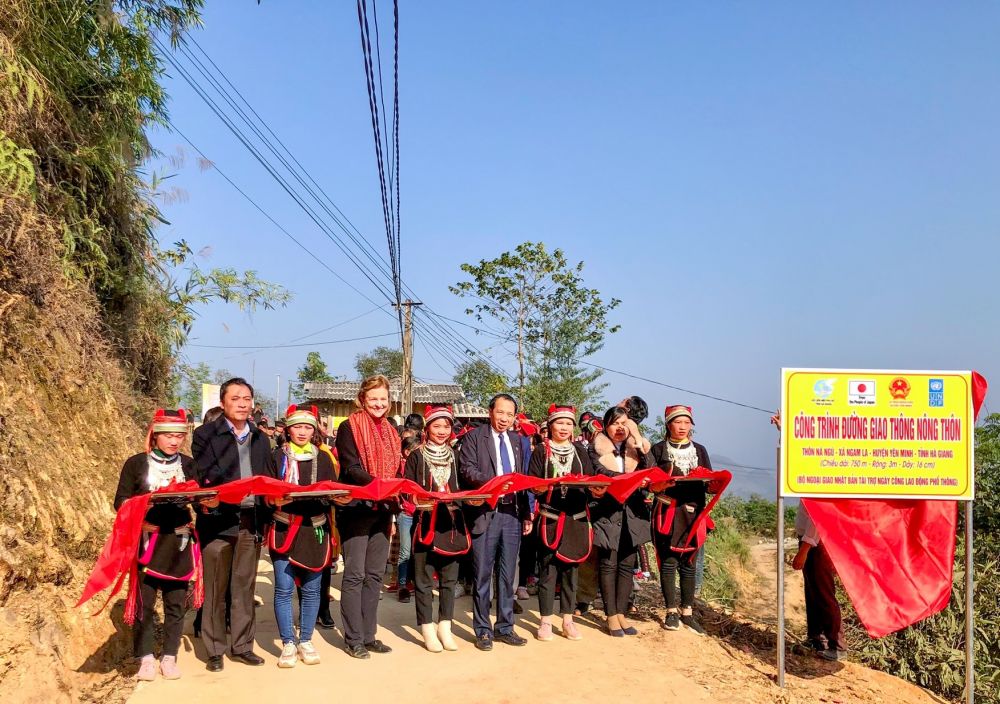More efforts invested in poverty reduction in ethnic minority areas
Creating sustainable livelihoods for ethnic minority residents in mountainous and border areas to help them get out of poverty is a consistent policy of Viet Nam, which has resulted in major achievements.

The handover ceremony for a total of 26.5 km of new rural roads in Ha Giang province. (Photo: UNDP)
Statistics show that the household poverty rate dropped from 58.1 percent in 1993 to 2.75 percent in 2020 under new criteria. Some localities have shown impressive performance in this regard over the past years such as Si Ma Cai and Muong Khuong districts of Lao Cai province (down 40.66 percent and 39.96 percent), Mu Cang Chai district of Yen Bai province (down 34.51 percent), and Nam Tra My district of Quang Nam province (down 33.52 percent).
During 2016-2020, though Viet Nam had encountered many natural disasters and disease outbreaks, especially the COVID-19 pandemic, the National Assembly and Government still doubled investment in poverty reduction compared to the previous period. About 21 percent of the State budget was earmarked for guaranteeing social welfare, the highest percentage among the ASEAN countries.
More attention has been given to ethnic minority and mountainous areas as seen in the Prime Minister’s approval of the national target programme on socio-economic development in those areas for the 2021-2030 period, with the first phase from 2021 to 2025, last October.
After that, the PM gave the green light to the national target programme on poverty reduction for 2021-2025, aiming to achieve sustainable and multidimensional poverty alleviation. Notably, this programme targets reducing the poverty rate among ethnic minority households by over 3 percent annually.
To Duc, Chief of the National Office for Poverty Reduction, said many rural, coastal, and insular districts and communes have yet to escape from special disadvantages.
Therefore, in the time ahead, poverty alleviation efforts will focus on improving capacity so that low-income earners can sustainably get rid of poverty by themselves, and on developing essential infrastructure and inter-regional connectivity in those areas, he noted.
Minister of Labour, Invalids and Social Affairs Dao Ngoc Dung said during 2021-2025, it is necessary to make appropriate investment to improve the poor’s minimum standard of living and access to basic social services. Viet Nam will pay attention to both the quantity and the quality of poverty reduction.
Permanent Deputy Prime Minister Pham Binh Minh noted at a recent meeting that with a total investment of nearly 138 trillion VND (6 billion USD), the national target programme on socio-economic development in ethnic minority and mountainous areas for 2021-2025 has reiterated the Party and State’s high priority to and constant perfection of the ethnic minority policies so as to meet requirements in reality and, especially, the aspiration for the development of all ethnic groups nationwide.